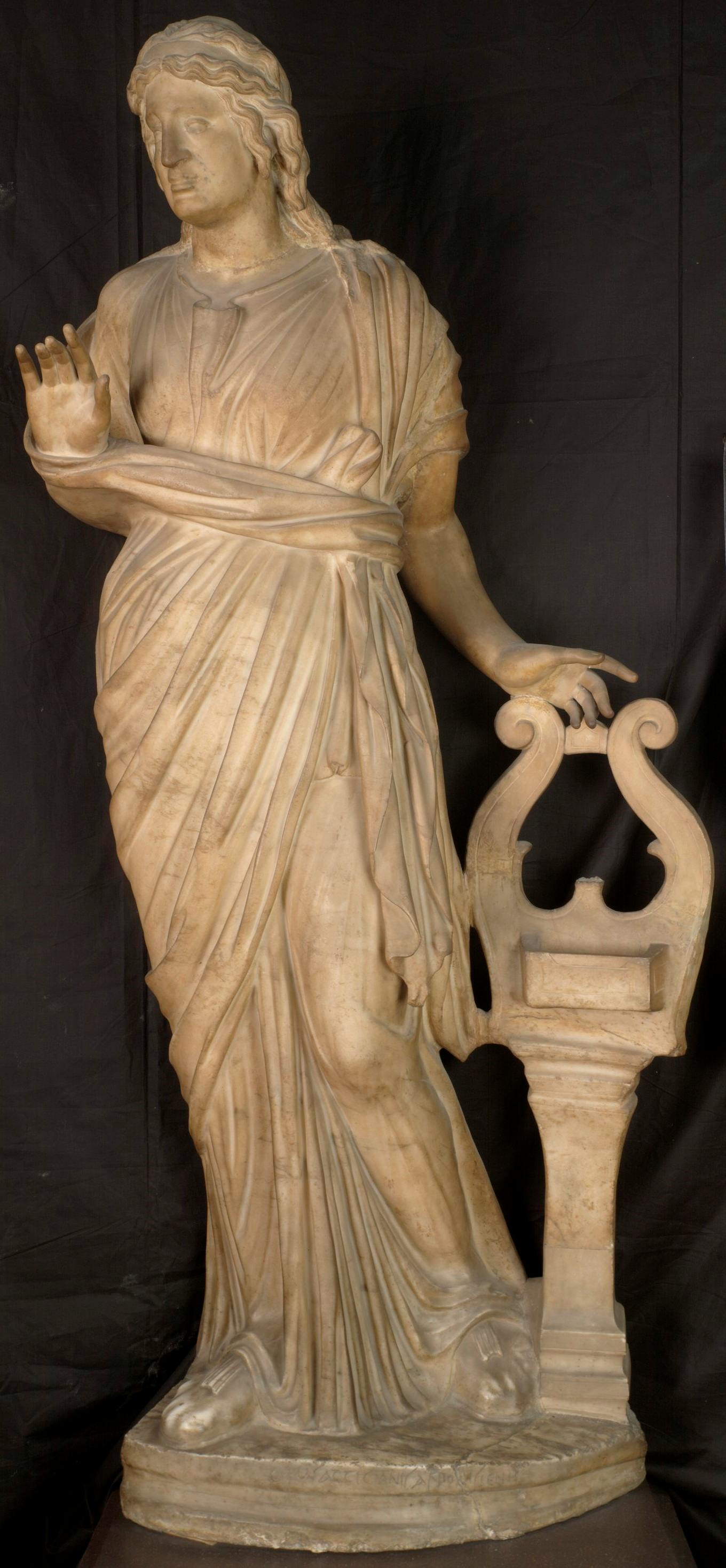Muse of Atticus of Aphrodisia
Atticus of Aphrodisia (roman art)
Opus Atticiani{s} Afrodisien<s>is
The sculpture, which originally belonged to the Del Bufalo collection in Rome, was purchased in 1587 by Ferdinando de' Medici and only arrived in the Gallery in the early 18th century. The work, carved in Greek marble, can be dated to the years between the Valentinian and Theodosian dynasties (ca. 370-400 A.D.) and depicts a woman dressed in a tunic and cloak with her right arm raised and her left resting on a zither, which is in turn supported by a small pillar. Thanks to the Latin inscription engraved on the base, we know the name of the author, an otherwise unknown Atticus of Aphrodisia. The artist was originally from a city in Caria, a region of Asia Minor, which, since the 1st century A.D., had been famous for its workshops of marble workers who exploited the nearby white marble quarries. The Aphrodian artists also set up workshops in Rome, often being employed in various parts of the Empire in construction sites commissioned by the emperor, such as the Severian Forum of Leptis Magna in Libya. The work, which can be traced back to that iconographic vein of "pagan" inspiration still vital in the years when Christianity was about to become the state religion, is inspired by a prototype from the Hellenistic period (ca. 300-200 b.C.). It is probable that in such an advanced age these effigies of divinities and heroes had lost any religious connotation to become generic allegories of virtues and human qualities. In the case in question, a Muse is represented, who, by virtue of the largely ancient zither, can be identified more precisely with Erato, daughter of Zeus and Mnemosyne and protector of song and erotic poetry. Almost the entire left arm of the statue, the right hand, the head, the lower part of the pillar and the arched frame of the musical instrument that flanks the female figure are the result of integrations.
A. Romualdi (a cura di), Studi e restauri. I marmi antichi della Galleria degli Uffizi, I, Firenze, Polistampa, 2006 (con contributi di M. Aurenhammer, La Musa di Atticiano di Afrodisia: considerazioni sulla plastica ideale, pp. 47-57; H. Taeuber, La firma di Atticiano di Afrodisia, pp. 59-62; A. Romualdi, Considerazioni sulla testa della Musa di Atticiano, pp. 63-67; C. Mancini, Il restauro, pp. 69-75) e bibliografia precedente.
